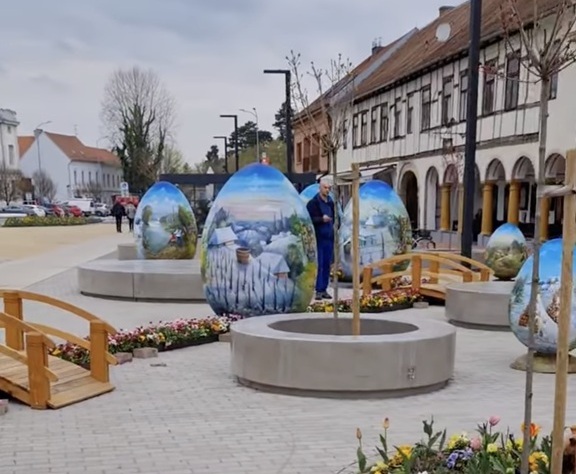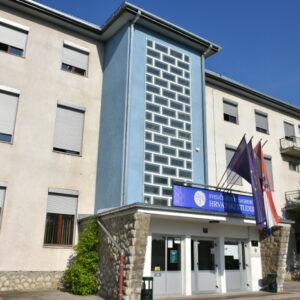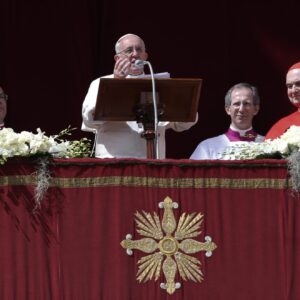Eggs represent new life and fertility. According to The Easter Book by Francis X. Weiser, 1954, “[t]he origin of the Easter egg is based on the fertility lore of the Indo-European races. To our pre-Christian ancestors, it was a most startling event to see a new and live creature emerge from a seemingly dead object. The egg, to them, became a symbol of spring”.
However, to infuse this representation of new life with Christian significance, throughout history, Christians came to view the Easter egg as a symbol of the empty tomb from which Jesus Christ was resurrected. New life, victorious over death, rose from the tomb, and similarly, the egg, the symbol of new life, was coloured with this understanding of new spiritual life as well. According to some accounts, boiling Easter eggs represents the sealing of the tomb, and cracking the boiled eggs open represents Christ’s victory over death and His emergence from the tomb. This explains why some call Easter eggs “resurrection” eggs. (“Easter Symbols,” 2024/ Catholic Exchange).
Since Easter celebrations in modern times, besides eggs, see lots of rabbits often referred to as bunnies, chocolate ones in particular, it seems useful to say a word or two about them and their connection to Easter. The rabbit, or hare, was a symbol of fertility in pagan times, and in Anglo-Saxon peoples it represented the earthly embodiment of the fertility goddess Eastre. Hares and rabbits, as animals with the fastest ability to reproduce, were a symbol of the new birth of life in the spring, when the pagan holiday of the arrival of spring was celebrated. In Germanic mythology, the rabbit was also a companion of Ostara, the goddess of spring.
The first edible rabbits or hares were also made in Germany, at the beginning of the 19th century. The Easter bunny (or hare) came to the Croatian Easter tradition precisely from the Germanic region.
According to Christian folk tradition, the rabbit is the messenger of Easter. Just as the rabbit, after winter, suddenly appears in spring and thus announces more beautiful and warmer days, so too did Christ, after suffering and death, suddenly appear among his disciples as the resurrected one.
Easter is the greatest Christian holiday when believers celebrate the resurrection of Christ, after he suffered, died on the cross and was buried. Croatians, as other Christians in the European regions appear to have taken extraordinarily loving and time-consuming effort in making the egg most beautiful. In that, saying that the resurrection of Jesus Christ is the most beautiful event of lives. Of Croatian Catholic lives.
An Easter basket is a wicker basket in which food was carried for the Easter blessing. The contents of the basket varied according to the customs of the region. After the housewife covered the basket with a tablecloth, she would usually put Easter food in it, such as bread, cheesecake, pastries (Easter sweet bread, Easter sweet bread plait), prosciutto or ham, boiled eggs (painted or peeled), milk and cheese, wine, salt and sugar, various spices (such as horseradish), vegetables (such as garlic and red onion leaves) …
Sometimes, housewives prepared only as many eggs for the blessing as there were members in the family (sometimes including absent ones), and sometimes they also counted the deceased members they knew. In particular, housewives on those days prepared milk pastries and sweet Easter plaits, cheese strudel, yeast dough cakes, cheesecakes, cakes, gingerbread, various small cookies in the shape of bunnies, popcorn and chickens …
Easter Sunday in Croatia is a joy to behold!
Happy and blessed Easter to you all! May this Easter bring you joy and the promise of new beginnings! Ina Vukic




